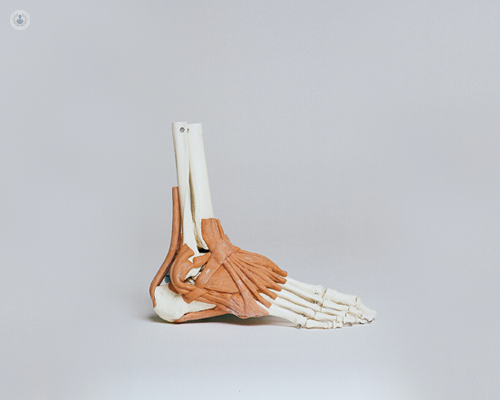All about ankle distraction arthroplasty
Autore:Ankle distraction arthroplasty is an innovative procedure designed to treat advanced ankle arthritis without resorting to fusion or replacement. This joint-preserving technique is particularly beneficial for younger, active individuals who wish to maintain mobility in the ankle and delay or avoid more invasive surgeries.

What is ankle distraction arthroplasty?
Ankle distraction arthroplasty is a surgical technique that involves mechanically separating the bones of the ankle joint (the tibia and talus) using an external frame. This process reduces the load on the damaged cartilage, allowing it to regenerate and heal over time.
The procedure is typically used for patients with advanced ankle arthritis who have significant pain, reduced mobility and joint damage but retain some cartilage and ankle joint motion.
How is the procedure performed?
- Pre-surgery preparation: The patient undergoes imaging studies, such as X-rays or MRI, to assess the extent of arthritis and joint health.
- Placement of an external fixator: During surgery, pins or wires are inserted into the bones of the ankle, and an external frame is attached to these pins to create distraction (separation) of the joint.
- Controlled distraction: The frame allows for precise, gradual distraction of the ankle joint over several weeks. The separation relieves pressure on the cartilage and creates an environment for healing.
- Rehabilitation: Patients typically wear the external frame for 8-12 weeks, with a focus on physical therapy to maintain joint mobility.
What are the benefits of ankle distraction arthroplasty?
- Preserves the ankle joint: Unlike ankle fusion, this procedure retains natural joint motion.
- Promotes cartilage repair: By reducing joint pressure, the procedure encourages cartilage regeneration.
- Delays more invasive surgeries: It can help postpone or even avoid the need for joint replacement or fusion.
- Maintains functionality: Patients can regain mobility and experience less pain over time.
Who is a candidate for ankle distraction arthroscopy?
Ideal candidates for ankle distraction arthroplasty include:
- Individuals with moderate to severe ankle arthritis who wish to preserve joint motion.
- Younger patients with active lifestyles who are not yet ready for joint fusion or replacement.
- Patients with joint damage but some remaining cartilage in the ankle.
What involved in recovery and rehabilitation?
The recovery process requires patience and a commitment to rehabilitation. Key aspects include:
- Frame maintenance: Patients will need to clean and monitor the external fixator daily to prevent infection.
- Physical therapy: A customised physiotherapy programme helps maintain joint mobility and strength.
- Follow-up care: Regular visits to the specialist ensure proper healing and monitor progress.
Is ankle distraction arthroplasty effective?
Studies have shown that this procedure can significantly reduce pain and improve joint function for many patients. While it may not be a permanent solution, it can provide several years of symptom relief and delay the need for more invasive interventions.
If you are experiencing ankle pain and stiffness due to arthritis, consulting an orthopaedic surgeon specialising in joint preservation can help determine if ankle distraction arthroplasty is the right option for you.


